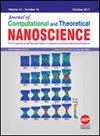Internet of Things and Cloud Enabled Hybrid Feature Extraction with Adaptive Neuro Fuzzy Inference System for Diabetic Retinopathy Diagnosis
Q3 Chemistry
Journal of Computational and Theoretical Nanoscience
Pub Date : 2020-12-01
DOI:10.1166/JCTN.2020.9418
引用次数: 2
Abstract
At present times, the diabetic retinopathy (DR) become high and it is required to design an Internet of Things (IoT) enabled DR diagnosis tool to assist the diagnosis process of remote patients. This study designs and develops IoT and cloud computing based Hybrid Feature Extraction (HFE) with Adaptive Neuro Fuzzy Inference System (ANFIS) for DR detection and classification model, abbreviated as HFE-ANFIS model. The proposed model initially captures the retinal fundus image of the patient using the IoT enabled head mounted camera and transmit the images to the cloud server, which executes the diagnosis process. The image preprocessing takes place using three stages namely color space conversion, filtering, and contrast enhancement. Next, segmentation process takes place using fuzzy c-means (FCM) model to identify the diseased portions in the fundus image. Then, HFE based feature extraction and ANFIS based classification processes are carried out to grade the different levels of DR. The performance validation of the HFE-ANFIS model takes place against MESSIDOR dataset and the results are investigated under different dimensions. The simulation outcome indicated that the HFE-ANFIS model has offered superior performance to other methods with the maximum average sensitivity of 94.55%, specificity of 96.41%, precision of 94.66% and accuracy of 95.97%.基于物联网和云的自适应神经模糊推理系统混合特征提取在糖尿病视网膜病变诊断中的应用
目前,糖尿病视网膜病变(DR)发病率很高,需要设计一种物联网的DR诊断工具来辅助远程患者的诊断过程。本研究设计并开发了基于物联网和云计算的混合特征提取(HFE)和自适应神经模糊推理系统(ANFIS),用于DR检测和分类模型,简称HFE-ANFIS模型。所提出的模型最初使用支持物联网的头戴式相机捕捉患者的视网膜眼底图像,并将图像传输到云服务器,云服务器执行诊断过程。图像预处理使用三个阶段进行,即颜色空间转换、滤波和对比度增强。接下来,使用模糊c均值(FCM)模型进行分割处理,以识别眼底图像中的病变部分。然后,进行了基于HFE的特征提取和基于ANFIS的分类过程来对不同级别的DR进行分级。针对MESSIDOR数据集对HFE-ANFIS模型进行了性能验证,并在不同维度下对结果进行了研究。仿真结果表明,HFE-ANFIS模型具有优于其他方法的性能,最大平均灵敏度为94.55%,特异性为96.41%,精密度为94.66%,准确度为95.97%。
本文章由计算机程序翻译,如有差异,请以英文原文为准。
求助全文
约1分钟内获得全文
求助全文
来源期刊

Journal of Computational and Theoretical Nanoscience
工程技术-材料科学:综合
自引率
0.00%
发文量
0
审稿时长
3.9 months
期刊介绍:
Information not localized
 求助内容:
求助内容: 应助结果提醒方式:
应助结果提醒方式:


